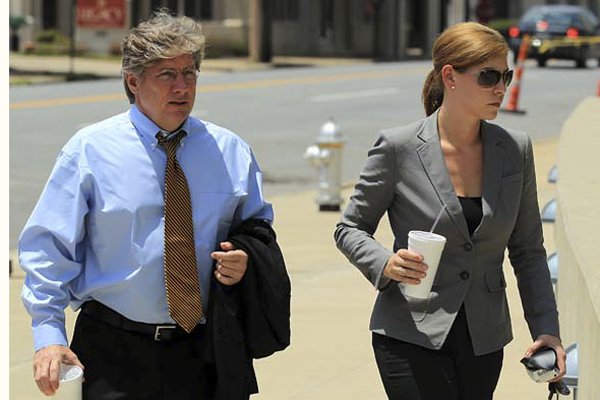LITTLE ROCK — Only three fingerprints were found on the debris from an explosion last year in West Memphis that severely injured the chairman of the Arkansas State Medical Board, and none of them belonged to Dr. Randeep Mann, who is on trial in the bombing, a fingerprint expert said Thursday.
On the third day of testimony in what is expected to be a four-week trial in the Little Rock courtroom of U.S. District Judge Brian S. Miller, Larry Hankerson of the federal Bureau of Alcohol, Tobacco, Firearms and Explosives told jurors that the prints belonged to a bureau agent who handled the debris after the explosion.
Hankerson, a fingerprint specialist at the bureau’s Atlanta laboratory who has 37 years of experience, testified that he found the prints on the bumper of Dr. Trent Pierce’s 2008 Lexus sport utility vehicle after an explosion nearly ripped the bumper off the vehicle on the morning of Feb. 4, 2009.
Special section
Explosives experts have testified that someone booby-trapped the vehicle by duct-taping a military-style hand grenade to the back of a small spare tire and leaning the tire against the vehicle’s front bumper, on the driver’s side.
The grenade had an exterior safety lever, called a spoon, along its outer surface. As long as the lever remained held against the grenade, the TNT inside wouldn’t explode.
Experts testified that the bomber must have carefully placed the device so that even though the lever had been released, it remained delicately held in place, perhaps by a cord, until something moved the tire, prompting the spoon to touch a spring inside the grenade, activating an explosion within five seconds.
On Feb. 4, 2009, Pierce walked to his vehicle in his driveway and picked up the spare tire to move it out of the way. The resulting explosion left him partially blind and inflicted injuries that required numerous surgeries.
The explosion occurred about 7:50 a.m. as Pierce, then 54, prepared to drive to his medical clinic in West Memphis to spend a few hours before driving to Little Rock for a Medical Board meeting.
Prosecutors have said their case against Mann, 52, is based on circumstantial evidence. He maintains that he had nothing to do with the bombing, despite his history of disputes with the Medical Board. Shortly before the blast, he had learned that the board was investigating him on allegations that, if proved to be true, could cost him his medical license in Arkansas, which could also affect his ability to get a license in any other state.
None of the 24 prosecution witnesses who testified so far have directly linked him to the explosion.
Hankerson, the federal fingerprint expert, told jurors that he examined the bumper that was left dangling after the explosion, the Nissan spare tire that still held remnants of duct tape, and two small sections of duct tape found in the vicinity of the blast.
He said he could find no prints on the duct tape and no identifiable prints on the tire.
Hankerson said prints often cannot be found on rough surfaces like tires and are often destroyed by heat.
The fingerprint analyst also examined a green ammunition can, and its contents, that was found a month after the explosion partially buried in woods about 300 yards from Mann’s home in London. He said he found one print on the lid of the can and two prints on white plastic grenade holders inside the canister, which held 97 grenades.
He said he compared them with prints from Mann and several other people, and “they did not match.”
More details about tests conducted on the partially buried canister are expected later in the trial.
On Tuesday, a housekeeper for Pierce and his wife, Melissa, testified that the night before the bombing, she saw a man who might have been of Indian descent “jogging in place” in jeans and a baseball cap near the Manns’ driveway. She said the man had long, black hair that was pulled back in a ponytail.
When asked if the man looked like Mann, she asked, “Who is Mann?” Mann then stood up in the courtroom. Upon seeing him, she shook her head and said the jogger was someone 10 or 20 years younger.
The housekeeper, who is black, said the man “wasn’t black and he wasn’t white,” but he looked like “one of those people that wear those little dots up there on their forehead.”
Mann, who is from India, has said he has been unfairly targeted by members of the Medical Board and many residents in Pope County because he was born in another country, even though he is a naturalized U.S. citizen.
His wife, Sangeeta “Sue” Mann, 49, who is also a naturalized U.S. citizen originally from India, is also on trial, accused of trying to thwart an investigation of him.
The trial is to resume at 9 a.m. today.
Front Section, Pages 1 on 07/16/2010
